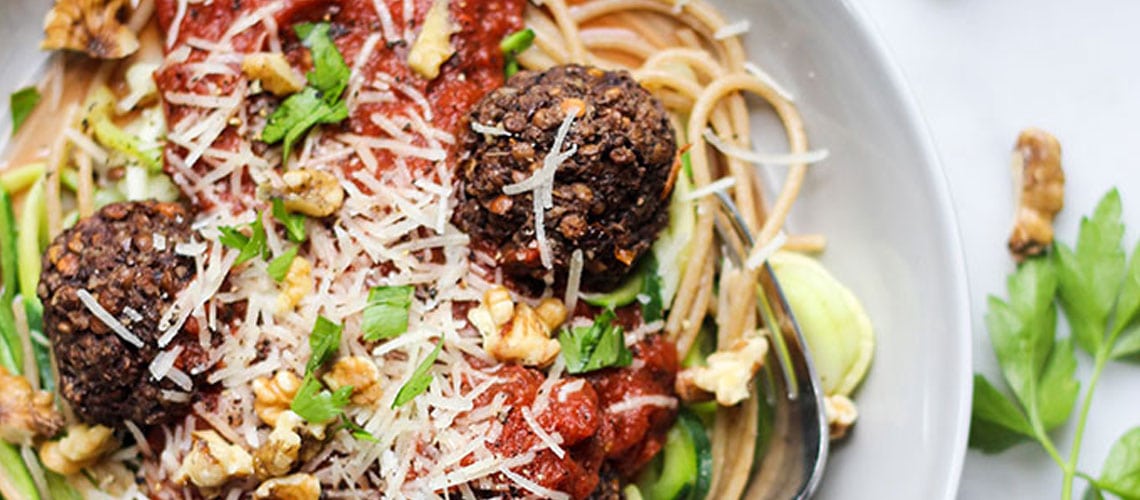Think plant-forward eating is difficult? Think again! With a few tips and tricks, you’ll be eating more tasty plant-forward meals in no time.
-
- Plant-forward is not “all or nothing.” You don’t have to go meat-free to be more plant-forward. Try adding veggies to your favorite recipes and comfort foods. You’ll boost the nutrition while reducing some of the saturated fat and calories
-
- Start your meal with a soup or salad. It ensures veggies will be featured and provides a good way of slowing down the meal pace, too
-
- Swap in plant proteins for animal proteins. Kidney or garbanzo beans, lentils, nuts, like walnuts seeds, and high-quality soy protein, like edamame or tofu, are all great options
-
- Substitute or add chopped mushrooms and/ or walnuts for meat in numerous dishes. Their textures and savory taste are perfect as meat substitutes
-
- Take meat off the menu just once a week. Maybe you’ve heard of Meatless Monday? You can also choose other days of the week to think about a more plant-forward eating style. Tofu Tuesday? Walnutty Wednesday? Fruit- forward Friday? Salad Saturday? Soup-er Sunday? Think about identifying one day each week where plant foods and plant proteins are front and center at every meal
-
- Feature a fruit bowl. When you have fruits and veggies displayed in a visible location, you’re more likely to choose them
-
- Include nuts, like walnuts, each day in a simple way. Eat a few with your morning oatmeal or on your salad at lunch. Try them in a trail mix at snack time, as the coating for salmon or chicken, or mixed into a bean- based burger or stir-fry at dinner.
-
- Broaden your bean repertoire. Are you stuck in a hummus rut? Try blended white or black beans as a dip instead. Add black beans to salads and pasta dishes. Enjoy lentils and soybeans in soups and stews, too
-
- Treat meat and poultry as the side, instead of the main feature. Make vegetables, beans and grains the entrée. A salad, hearty stew or casserole can be the main event. A big plate of roasted vegetables with a bean burger or a veggie stir-fry with edamame and walnuts make for flavorful, colorful, filling, and nutritious options
-
- While seafood may not be from the plant kingdom, it does contain good fats and protein. For those who choose to include seafood in their plant-forward meals, the Dietary Guidelines for Americans recommend consuming about 8 ounces of seafood per week
-
- Use fresh or dried herbs and spices for a great way to add both plants and flavor to your dish. Try freshly grated ginger in a stir-fry, a dash of pumpkin pie spice mixed into your oatmeal, or a sprinkle of oregano in your salad dressing or soup
-
- Roast, broil, bake or grill your veggies. Steamed veggies are fine, but other healthy cooking methods can bring out different flavors that make your veggies really taste special.
For recipe ideas, visit the plant-forward recipe collection.

